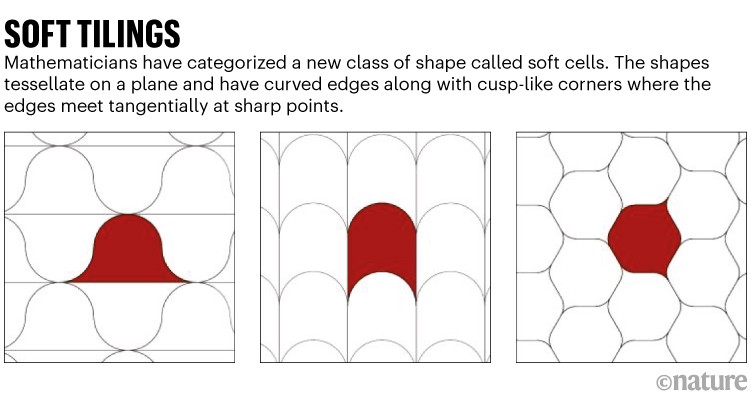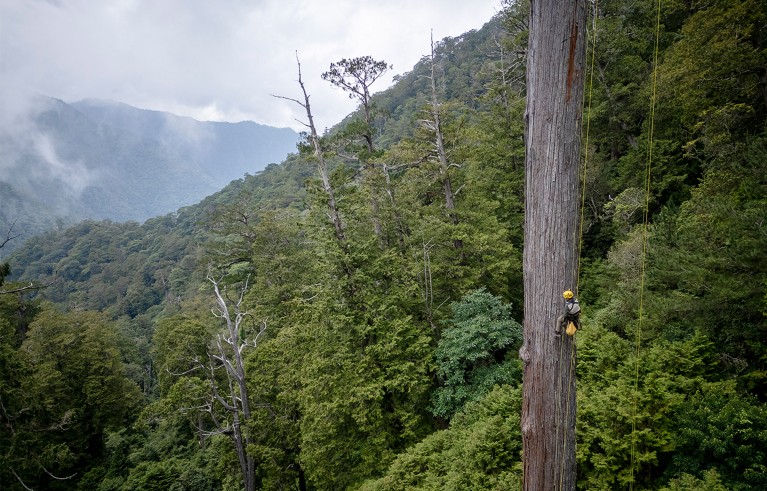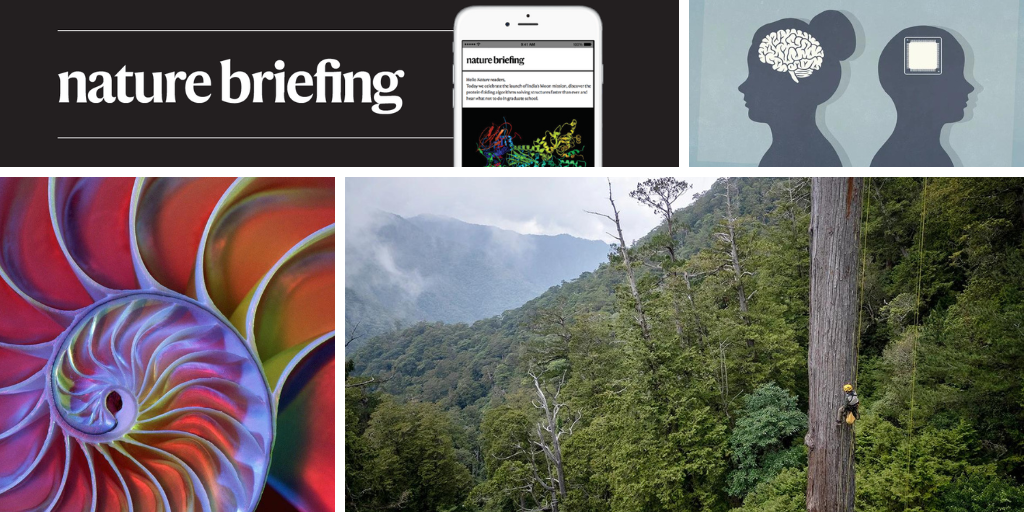Hello Nature readers, would you like to get this Briefing in your inbox free every day? Sign up here.

The chambers of the nautilus shell can be described by 3D soft cells.Credit: James L. Amos/Getty
Good news, tilers: mathematicians have described a new class of shape — soft cells. These shapes have corners that are deformed into thin points with internal angles of zero, which let them tessellate on a 2D plane with no gaps. Soft cells are common in nature, from the inside of onions to mollusc shells, but this new work is the first time they’ve been formally described. “Simply, no one has done this before,” says mathematician Chaim Goodman-Strauss. “It’s really amazing how many basic things there are to consider.”
Reference: PNAS Nexus paper

Source: Ref. 1
The hunt for the origins of COVID-19 has circled back to an animal market in Wuhan, China that was linked to many of the earliest cases of the disease. Researchers reanalysed genomes collected from the market shortly after it was shut down on 1 January 2020. They identified several animal species that could have passed SARS-CoV-2, the coronavirus that causes COVID-19, to people. The study establishes the presence of animals and the virus at the market, although it does not confirm whether the animals themselves were infected with the virus. The researchers argue that their reanalysis adds weight to the market being the site of the first spillover events, in which animals infected humans.
Reference: Cell paper
An artificial intelligence (AI) ideas generator came up with more original research ideas than did 50 scientists, according to a preprint study. The ideas were blind evaluated by reviewers, who scored AI-generated concepts as more exciting, but slightly less feasible, than those from people. Critics say that pitting scientists against an LLM that can generate thousands of ideas in hours isn’t exactly a fair fight. “You have to compare apples to apples,” says computational social scientist Jevin West.
Reference: arXiv preprint (not peer reviewed)
Researchers have united to create a defence playbook for scholars dealing with intimidation and harassment because of their work. The advice, published by the Researcher Support Consortium, starts with steps for individuals such as removing personal information from public sites. But it also makes clear that the onus is on employers to provide support. “It’s universities and the academic institutions that have the primary responsibility to act,” says political scientist and consortium co-founder Rebekah Tromble.
As more adults turn to anti-obesity drugs such as Ozempic and Wegovy, attention is shifting to whether they should be prescribed to children. Some of the drugs, which mimic the effects of the appetite-suppressing hormone GLP-1, are already approved in the United States and Europe to treat obesity in teenagers. Now a trial has shown that they work in children as young as six. But there is concern about whether people must stay on the medications for life to maintain the benefits. And the long-term effects of these drugs on kids’ growing bodies is unknown.
Reference: The New England Journal of Medicine paper
Part of the infamous Three Mile Island nuclear power plant in the United States will be reopened to power Microsoft data centres. Unit 1, which was closed in 2019, will be renamed the Crane Clean Energy Centre. Unit 2, which experienced a partial meltdown in 1979, will remain closed. It’s rare that a nuclear plant is restarted — this is only the second such programme in the United States — but the move could become more common as tech giants seek low-carbon energy sources for power-hungry artificial-intelligence (AI) systems. Microsoft has invested in an AI chatbot trained on nuclear regulations in the hopes of streamlining the multi-year process of getting a new nuclear-power plant approved.
Financial Times | 5 min read & The Wall Street Journal | 6 min read (paywall)
Where I work

Rebecca Hsu is a forest ecologist based in Taiwan.Credit: Dave Tacon for Nature
Forest ecologist Rebecca Hsu studies vascular epiphytes — plants that live on other plants, but do not parasitically steal their nutrients. Her research is taking her to new heights — in this case, almost 2,000 metres above sea level in the canopy of a giant Taiwania tree. “Some climbers will panic, but when I reach the high tree canopy, I feel good,” she says. “Every tree climb is an adventure. You never know what you’re going to meet in the canopy until you’re there.” (Nature | 3 min read)
On Friday, Leif Penguinson was hanging out with some friends at the Retima Hippo Pool, a gathering place at the confluence of the Seronera and Orangi rivers in Tanzania’s Serengeti National Park. Did you find the penguin? When you’re ready, here’s the answer.
Thanks for reading,
Flora Graham, senior editor, Nature Briefing
With contributions by Jacob Smith
Want more? Sign up to our other free Nature Briefing newsletters:
• Nature Briefing: Careers — insights, advice and award-winning journalism to help you optimize your working life
• Nature Briefing: Microbiology — the most abundant living entities on our planet — microorganisms — and the role they play in health, the environment and food systems.
• Nature Briefing: Anthropocene — climate change, biodiversity, sustainability and geoengineering
• Nature Briefing: AI & Robotics — 100% written by humans, of course
• Nature Briefing: Cancer — a weekly newsletter written with cancer researchers in mind
• Nature Briefing: Translational Research — covers biotechnology, drug discovery and pharma


